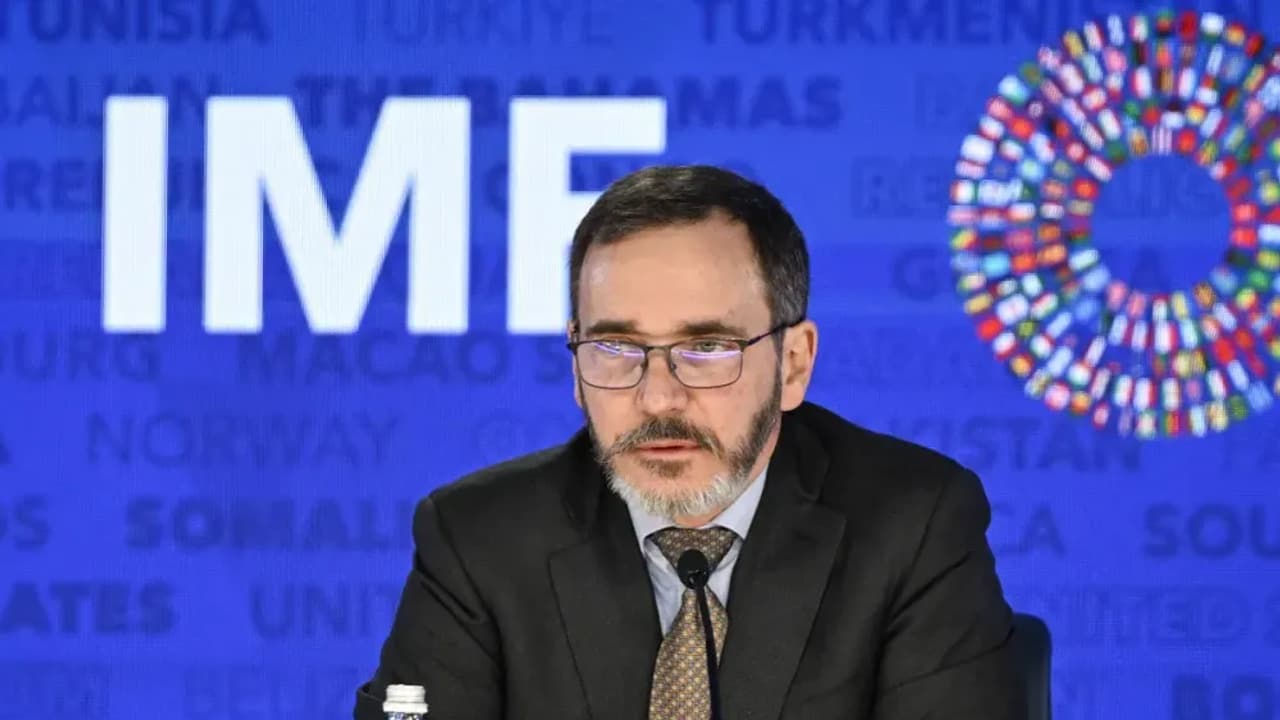The International Monetary Fund raised the odds of a U.S. recession to 40%, up from 25% in October, citing the impact from President Donald Trump’s reciprocal tariffs announced on ‘Liberation Day.’
President Donald Trump’s sweeping new tariffs are triggering mounting economic concerns at home and abroad, prompting the International Monetary Fund (IMF) to sharply downgrade its 2025 outlook for both the U.S. and global economies.

In its April update, the IMF reduced its U.S. growth forecast to 1.8%, down from 2.7% in January, citing tariffs imposed on April 2 and their knock-on effects. The Fund also raised the odds of a U.S. recession to 40%, up from 25% in October.
“The April 2 Rose Garden announcement forced us to jettison our projections — nearly finalized at that point — and compress a production cycle that usually takes more than two months into less than 10 days,” IMF Chief Economist Pierre-Olivier Gourinchas said at a press briefing on Tuesday.
The tariffs, rolled out on what Trump dubbed ‘Liberation Day,’ have sparked retaliatory moves from U.S. trading partners and rattled financial markets. “The common denominator ... is that tariffs are a negative supply shock for the economy imposing them,” Gourinchas said.
U.S. inflation is now projected to run higher than previously expected. The IMF lifted its inflation outlook by one percentage point, attributing the revision to persistent service-sector pricing pressures, rising prices of core goods, and fresh tariff-related supply shocks.
The IMF report emphasized that the impact on central banks’ efforts to curb inflation depends on whether the new trade barriers are viewed as temporary or permanent.
The Fund also cut its global growth forecast to 2.8% for 2025, down from 3.3% in its January estimate, citing widespread trade disruptions stemming from the U.S. policy shift.
The revision follows a warning last week from the World Trade Organization, which projected the sharpest drop in global trade since the 2020 COVID-19 shock.
The WTO stated that the U.S. move toward reciprocal tariffs and escalating policy uncertainty could lead to a contraction of global trade volumes by as much as 1.5% this year.
Since Trump’s tariff announcement on April 2, U.S. equity markets have struggled. The Invesco QQQ Trust (QQQ), which tracks the Nasdaq 100, is down more than 5%, while the SPDR S&P 500 ETF Trust (SPY) has declined 6%. The SPDR Dow Jones Industrial Average ETF (DIA) has fallen nearly 7%.
For updates and corrections, email newsroom[at]stocktwits[dot]com.<
Read also: Bitcoin Nears Record Breakout Against Nasdaq, Moves In Lockstep With Gold
